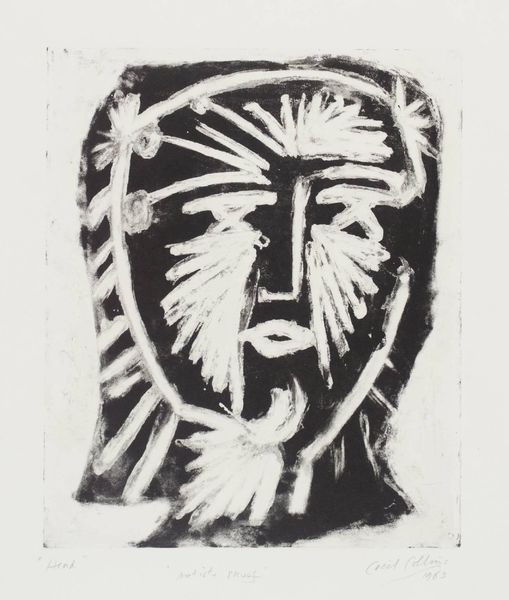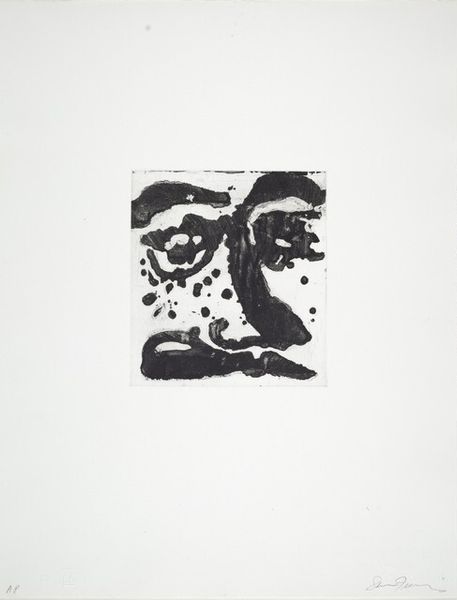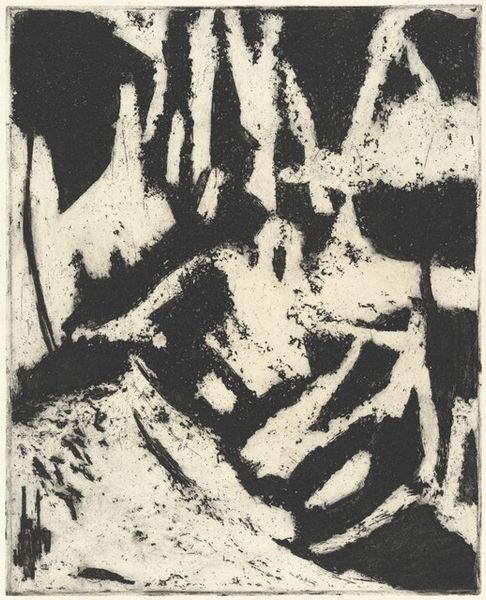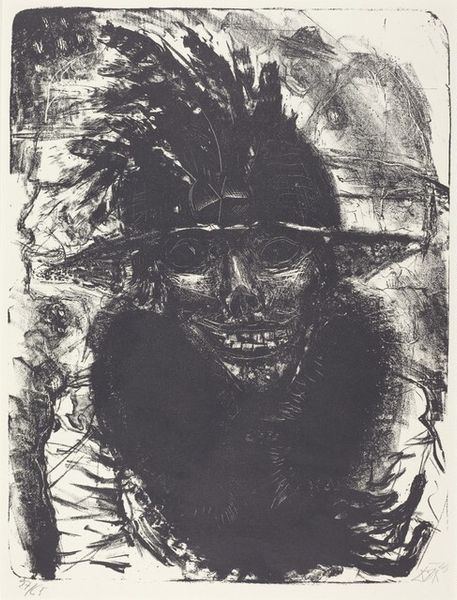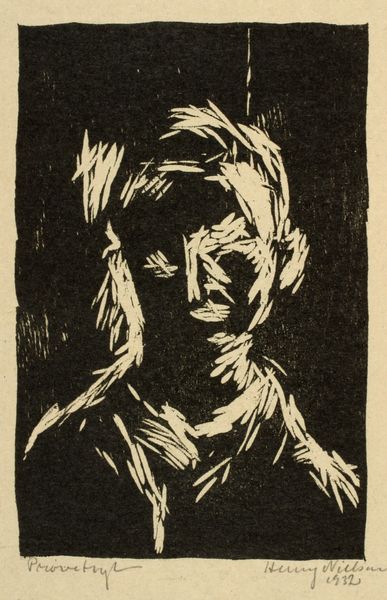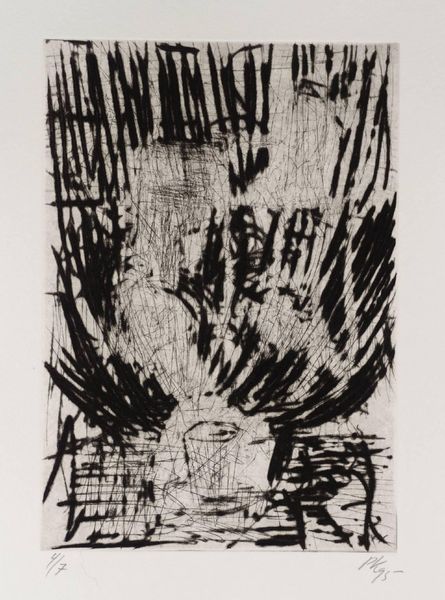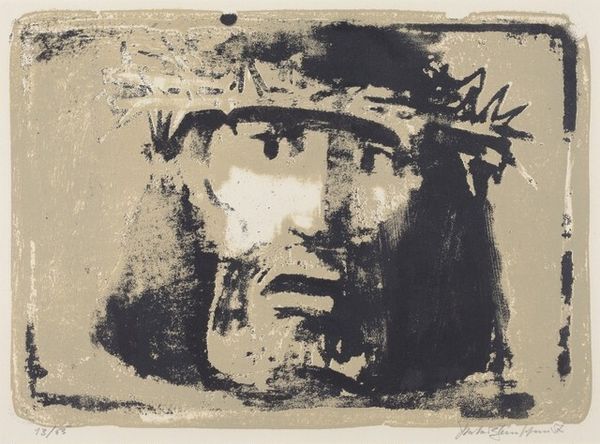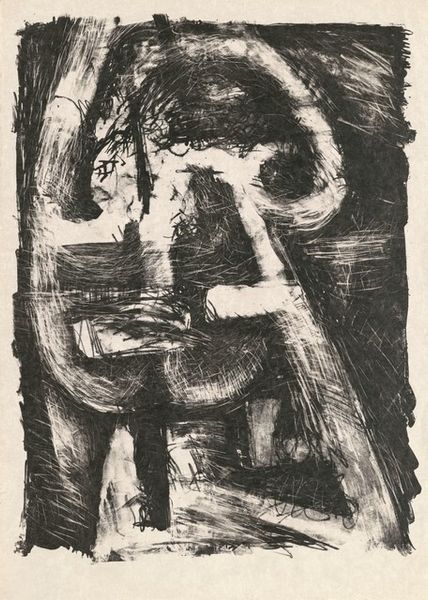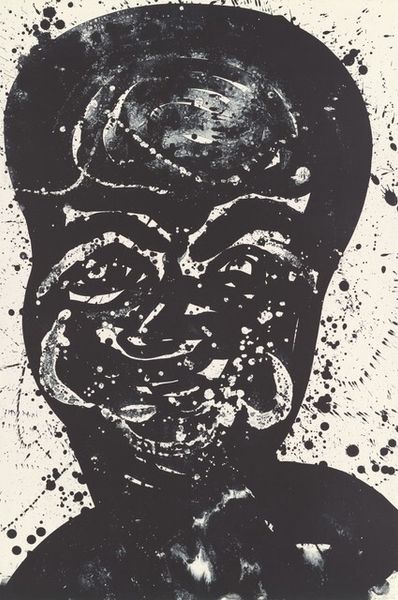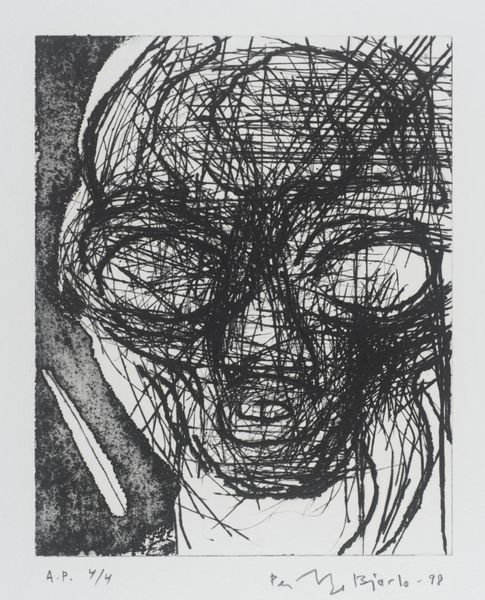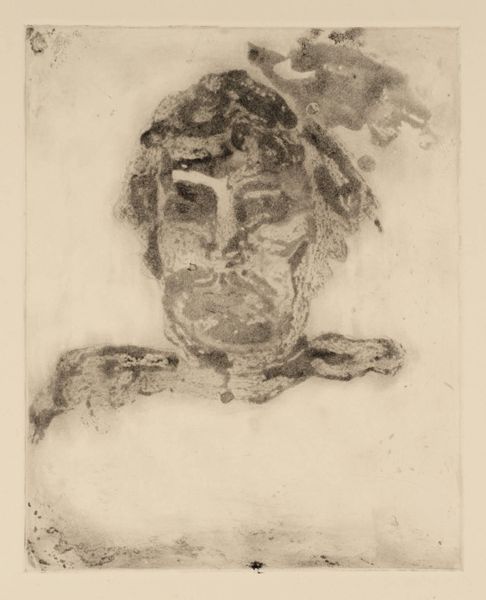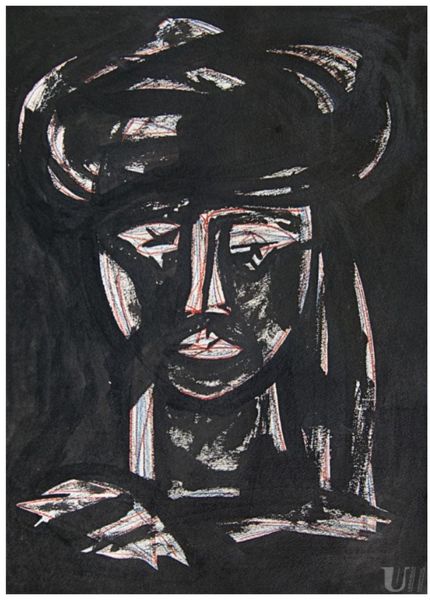
Dimensions: image: 304 x 254 mm
Copyright: © Tate | CC-BY-NC-ND 4.0 DEED, Photo: Tate
Editor: Cecil Collins' "Head" is a striking black and white print. The stark contrast creates a really intense and almost unsettling mood. What do you see in this piece? Curator: This "Head", with its radiating lines, feels almost like an icon, inviting contemplation. Collins was deeply engaged with Romanticism and spiritualism; how do you think this piece engages with the notion of the self as a site of political or social resistance? Editor: I hadn't thought of it that way, I was so caught up in the raw emotion. So you're saying that representing the inner self can be a form of standing against societal norms? Curator: Precisely. Collins, working through periods of intense social upheaval, saw art as a tool for inner liberation. This head, stripped of detail, becomes a universal symbol for the power of individual consciousness against external forces. Editor: That's a powerful way to look at it. I'll never see a portrait the same way again. Curator: Indeed! Art encourages us to question everything, even the simple act of looking at a "Head".
Comments
Join the conversation
Join millions of artists and users on Artera today and experience the ultimate creative platform.
tate 8 months ago
⋮
Collins pursued his vision of a lost paradise, destroyed by the mechanisation of the modern world, throughout his lifetime. Creating his own versions of archetypal figures, such as the Fool and the Angel, he attempted to reveal to us our innermost selves. These figures, he believed, represented an innocence that had ceased to exist in the ‘Machine Age’ (Keeble, p.73). Many of Collins’ aims and beliefs were promoted in an essay he titled The Vision of the Fool which was first published in 1947. Throughout the essay Collins links the Fool with the ‘Saint, the artist, the poet’ (Keeble, p.81). He explains: ‘modern society has succeeded very well in rendering poetic imagination, Art, and Religion, the three magical representatives of life, an heresy; and the living symbol of that heresy is the Fool. The Fool is the poetic imagination of life, as inexplicable as the essence of life itself’ (quoted in Keeble, p.73).
